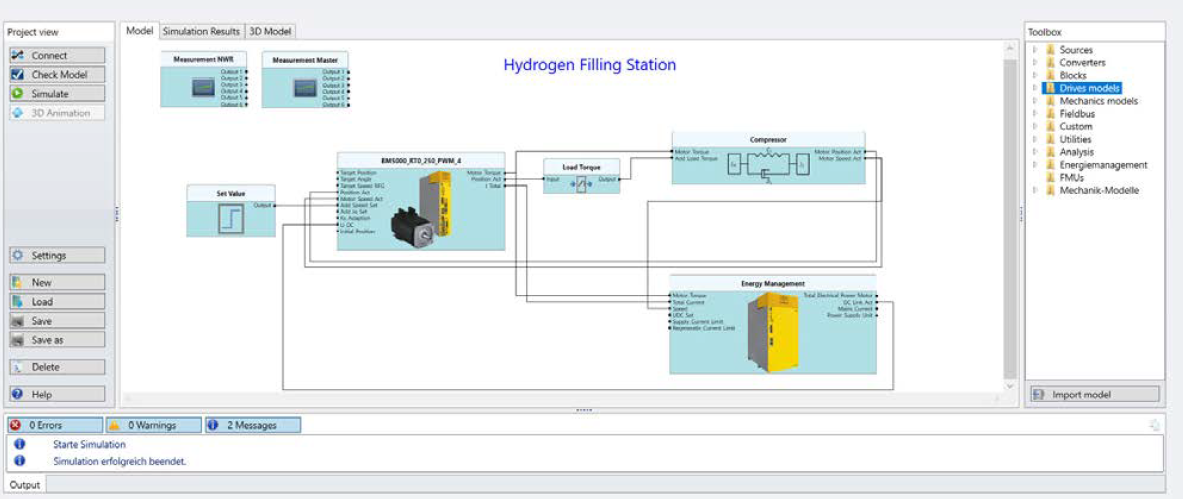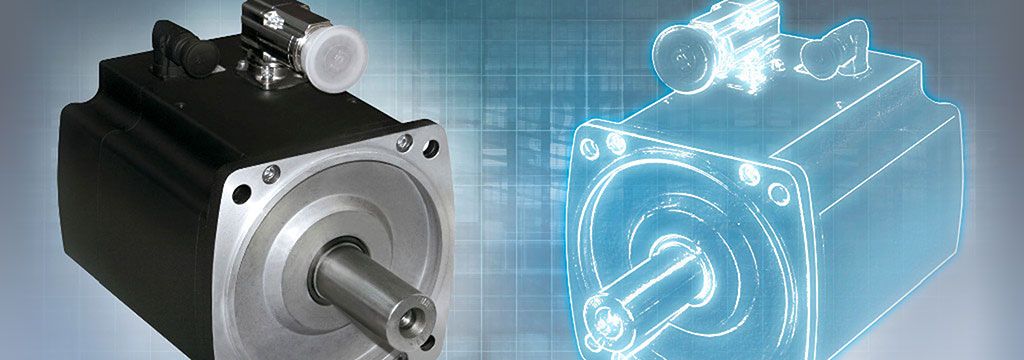Machine Optimization in Simulation
Read min.

A fun approach to programming. Try out some parameter changes and study the effects. Then try some variations on these – all risk-free and at minimal cost. That's not possible, is it? Sure it is! With simulations, complex applications can be tested virtually.
Index
When does simulation make sense? What are the benefits?

Everyone is familiar with it and many engineers rely on its support: Simulation software. It offers great benefits and is an investment in the future. But when does simulation actually make sense?
Any time a system or application becomes too complex for theoretical examination, it's time to consider simulation. It enables risk-free programming and testing of different configurations that in many cases cannot be easily implemented under real conditions. "Take for example the design of a bicycle frame. The material must have a certain thickness so that the bike is robust. But the frame also has to be as lightweight as possible so that you can quickly jump on and go. Costs also has to stay within reasonable bounds. After all, price is important to the customer. This is where design expertise is needed. "At least in theory", explains simulation engineer Stefan Hecht.
In practice, things are a bit different. Many designers play it safe and go with a somewhat thicker aluminum frame. "With simulation, the thickness of the aluminum can be calculated precisely. Oversized bike frames are thus a thing of the past", continues Stefan Hecht. In the simulation you can test at no risk what will happen when you reduce the thickness of the aluminum. "In virtual space, the ideal thickness can be determined. With the question always foremost in mind: At what point does the aluminum frame become unstable?", says the simulation engineer.
That is, for every problem the simulation offers a solution that can be virtually modeled, tested and optimized while taking a wide range of data and considerations into account. In this way the most cost-effective and best solution for any application is found. The results can then be carried over and implemented under real conditions.
What are the types of simulation?
From an application standpoint, there is a wide range of simulation types. A look at the technical simulation shows everything that is possible: The finite element method (FEM) is a numerical method that is used to conduct stress and deformation calculations. These can be used, for example, to calculate how a car is deformed in a frontal collision. Thermal simulations are also quite common today. They are an important part of evaluating temperature behavior in different components. With efficient heat management, the power density of components can be increased.

In addition, for complex fluids like polymer-based fluids, particle and fiber suspensions, foams, concrete, etc., simulation can be used to get a picture of reality so that robust and efficient solutions can be found based on the requirements of the application. The flow simulation is a cost-effective alternative to testing in the wind and water tunnel and allows for calculation of resistance values. Flow simulation is primarily used on airplanes, which constantly have to contend with turbulence. Hardware-in-the-loop (HiL) simulation is used in plant and machinery construction when a programmable logic controller is connected to a model of a machine through a fieldbus. The goal of HiL simulation is to shorten the commissioning phase. An additional advantage is safe testing – testing that does not put the operator in danger. Process simulation is used, for example, for the simulation of production facilities to test out alternative production processes and areas of potential optimization of the production lines.
What obstacles complicate the selection of the right software provider?

The decision to go with simulation software is anything but simple.
The market offers a range of simulation tools.
But which software is the right one?
Choosing can be difficult!
There are five points that need to be considered in choosing the right provider:
Many software solutions are complex and take time to get up to speed with before they can be used. That's why it pays to choose a user-friendly and easy-to-operate tool that can quickly be used and without prior skills.
ProSimulation – A tool for beginners & experts
Simulation helps increase the efficiency and precision of machines. The ProSimulation software makes it possible to test settings on the drive at no risk and to display results that are close to real conditions. In ProSimulation, the drive can be configured virtually and compared to actual conditions. The graphic display simplifies the interpretation of results. ProSimulation is fully integrated in ProDrive and uses the same operating sides. Thanks to the new simulation tool, users can start parameterization at an early stage and change it quickly and easily. This allows novices in simulation to get started quickly and electrical designers, commissioning or service technicians can also benefit from the advantages of simulation.

The extensive library also contains a model of energy management. This can be used to quickly implement the modeling of a hydrogen compressor
The simulation software ProSimulation provides the machine builder with a shorter commissioning time, improved energy efficiency, lowers costs and allows reliable controller parameterization for precise results. With ProSimulation you can cover the entire engineering process. That is, simulation can already be helpful in the design phase.
Once a machine has been commissioned or for existing machines and systems, the simulation software also offers the option of troubleshooting and optimization. Users can test parameter settings quickly and directly on the digital twin in ProSimulation without having to use the system directly on site.
This is how you can build your virtual test track with ProSimulation in no time!
Get your Whitepaper now!

I agree that external content may be displayed to me,
which means that personal data may be transmitted to third-party platforms.
Read more about this in our privacy policy.
Simulations positively affect the overall engineering process

The customer benefits in two ways: a drive system that is optimized for cost and installation space and time saved in commissioning the actual machine", explains simulation engineer Michael Stiegler. Efficiency can also be increased using simulation. An ideal energy management system or the optimization of parameter settings are further possibilities of how machine makers can use the simulation software.
'Simulations thus have a positive effect on the overall engineering process. And that is a real benefit, which is opening up new possibilities in mechanical engineering and is saving engineers lots of time through parallelized processes. Analyzing the machine design, performing drive designs and carrying out virtual commissioning – all of this is possible with simulation', says Michael Stiegler, summing up the possibilities.

Stefan Hecht
Simulationsingenieur


